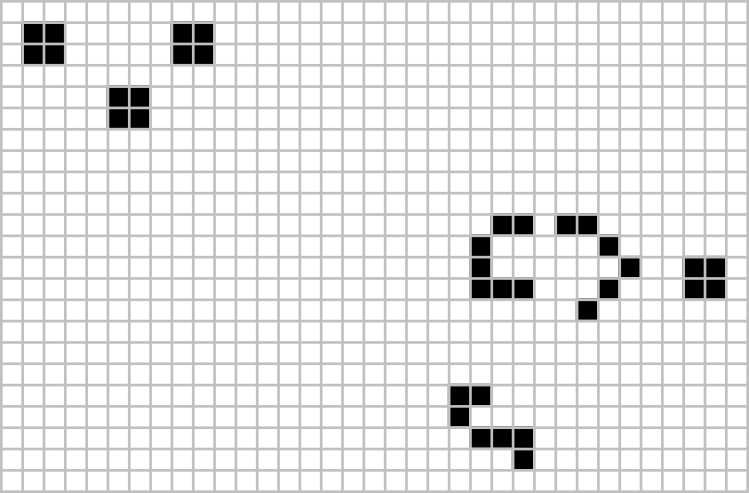Java implementation of Conway's Game Of Life
The objective of this project was to design a Game of Life program that takes an initial board (sequence of cells) as input and shows the development of the board after n number of transitions, where n is the number provided by the user. The evolution of the board depends on 4 transition rules:
- If a cell is alive and it has less than 2 living neighbours, it dies due to underpopulation in the next evolution of the board.
- If a cell is alive and has more than 3 living neighbours, it dies due to overpopulation in the next evolution.
- If a cell is dead and has exactly 3 living neighbours, it is born in the next evolution.
- The cell remains in the same state otherwise.
The first line of input is a single natural number, which specifies the number of transitions that needs to be affected. The next line/s represent rows of the Game of Life board. These lines only allow for 0 and 1 values as input. 0 represents a dead cell, whilst 1 represents a living cell. The output is a representation of the board, where each line shows a row in the board. There are as many output boards as there are transitions.
A number of approaches were possible for this project. A sparse matrix implementation was selected since it requires much less space than a 2-dimensional array. A sparse matrix is comprised of sentinel and data nodes, where the sentinel nodes form a circular linked list. All methods were programmed using a Test-Driven Approach. See here for more on the Game of Life.
- Java 8 is the only requirement.
- Simply clone the code from this repository. If using Eclipe, IntelliJ or another IDE, Client.java can be run.
- If running on terminal, src code needs to be compiled before running client. This can be done by navigating into the src directory of the cloned the repository. Then run:
javac -d ./../bin -sourcepath . Client.java. Then the application can be run from the bin directory with the following command:java Client - The following command arguments are expected: An integer in the first line that represents the desired number of iterations. On the next line/s you can enter the initial configuration of the Game of Life board. If the initial configuration is empty, an empty board will be created. See below for an example:
>> java Client >> 3 >> 101 >> 010 >> 111 - This yields the following boards at each iteration:
010 000 111 010 000 101 111 111 00000 01010 10001 01010 00100
